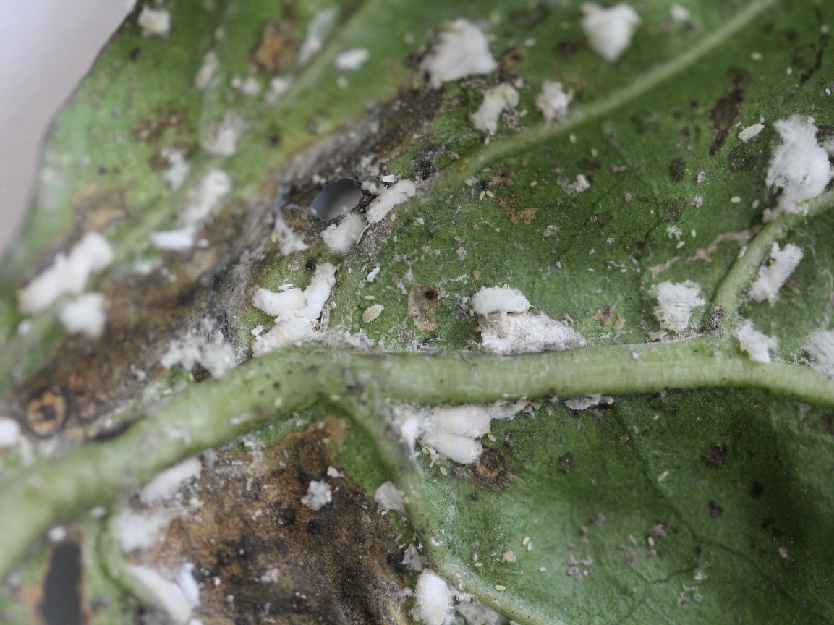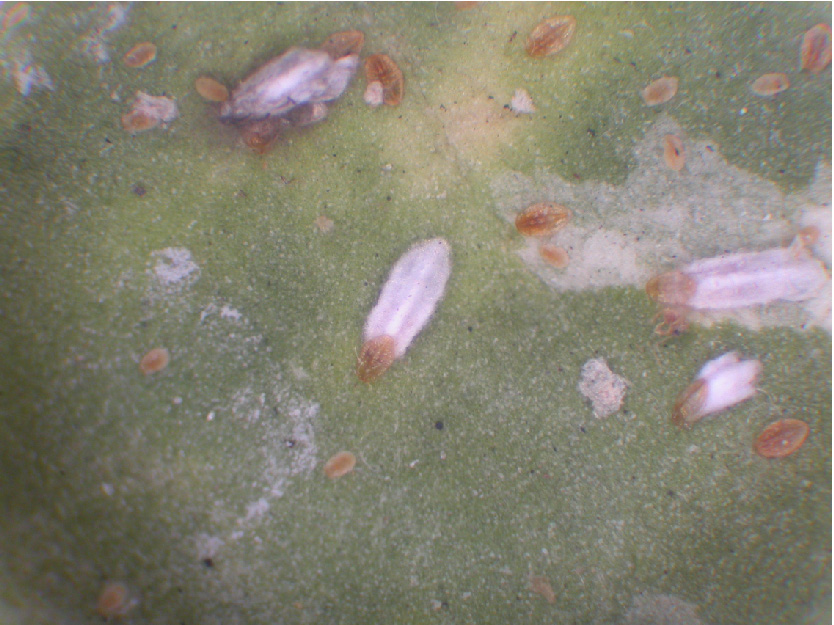Scale insects
Coccoidea, includes mealybugs (Pseudococcidae), soft scales (Coccidae) and Diaspididae
Appearance
The size and appearance of scale insects can vary greatly depending on the species. Most species are between 0.8 and 6 mm in size, although some species can grow considerably larger.
Scale insects are characterised by extreme sexual dimorphism in the adult stage. The females are wingless and, in some species, are immovably anchored to the plant with their proboscis due to the complete reduction of their limbs. They usually have a hard dorsal shield, which serves as protection for the offspring after the females die. The females are often covered in a protective layer of wax, which can appear shiny or woolly. The considerably smaller males are usually winged.
Biology
The female scale insects can usually be found in large colonies on leaves, petioles, shoots and branches of the infested plants, where they perform sucking activities with their proboscis. Not only the females themselves live protected under the shields, but also their eggs. In the case of cup and cap scale aphids, the first larval stage is mobile, while all older stages are sessile. The mealybugs, on the other hand, are very active until they lay their eggs. Males are winged and do not cause direct damage. In addition to sexual reproduction, scale insects can also reproduce parthenogenetically.
Damage symptoms
The pests occur on various agricultural crops and often on houseplants. The presence of scale insects is usually easily recognized by the immobile scales on the infested plant. When they occur in masses, significant damage can result. By withdrawing plant sap from the phloem, the infested plant loses carbohydrates and nitrogen. In the long term, severely infested plants may show signs of emaciation and stunted growth. If the sticky excretions (honeydew) of the scale insects are deposited on the plant parts and are not washed off, black fungi grow on them - a phenomenon known as "sooty mold", which can cause loss of photosynthetic efficiency and even death symptoms on the plants. In addition, scale insects can also transmit various plant viruses.
Host plants
Most scale insects are polyphagous, i.e. they suck on several host plants; a few species are specialized on only one type of plant or on certain parts of the plant. Scale insects are very common on palms, citrus plants, or oleander. In addition to fruit trees and berry bushes, grapevine can also be infested by scale insects. Scale insects occurring on grapevine are the cup scale insects(Pulvinaria vitis, Parthenolecanium corni, Parthenolecanium persicae) and the mealybugs(Heliococcus bohemicus, Phenacoccus aceris).
Prevention and control
- Regular control of the plants
- Avoid overfertilization of the plant
- Pruning of infested plant parts
- Brushing/scraping off the shields
- In case of heavy infestation: use of plant protection products e.g. pyrethrins or oils, systemic products which the aphids ingest while sucking (see list of plant protection products approved in Austria)
- Promotion of natural counterparts: For example, in vineyards there is usually a well-functioning natural regulation. The natural enemies of scale insects are predominantly small wasps, between 0.8 to 2.0 mm in size, from the superfamily of chalcid wasps (Chalcidoidea). Parasitization rates of over 90% are not uncommon. Other natural enemies of the (vine) scale insects are ladybugs, velvet mites, lacewing larvae, predatory bugs and also the predatory mite Typhlodromus pyri.
Last updated: 11.12.2025
automatically translated


